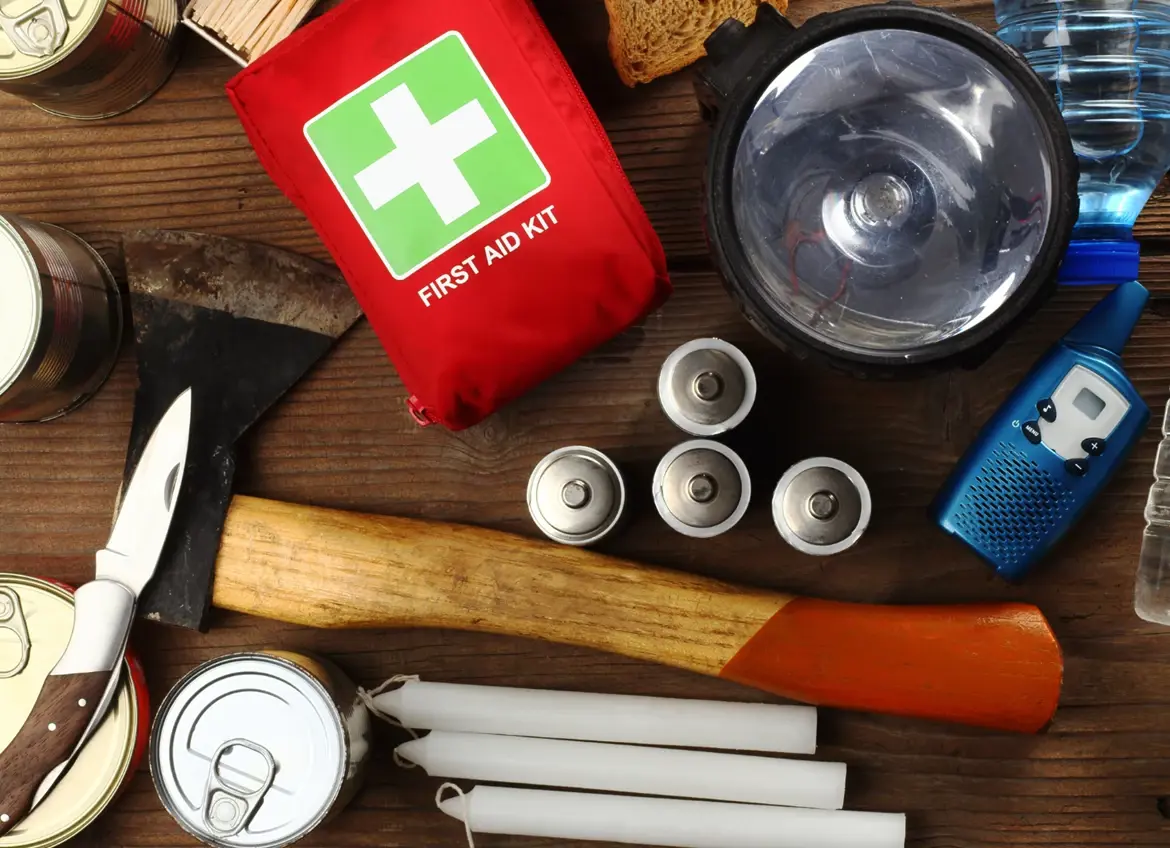
No one likes to expect the worst—but you do need to be prepared for it.
Creating a survival kit for your home can help keep you and your family safe when you need it most.
An emergency can be anything from a house fire to a natural disaster; natural disasters are the most common reason why you’d need an emergency survival kit. This means your geographical location and climate will affect some of the items you need to include in your kit.
If you aren’t sure what natural disasters are most common in your area, do some research and find out what you and your home are most at risk for.
Natural disasters:
Floods: This is the most common type of disaster and can affect anyone across the United States. You are at the highest risk in low-lying areas.
Earthquakes: These can happen across the United States at any time of year.
Wildfires: Forested areas with little rain are at highest risk.
Tornadoes: “Tornado Ally” refers to the states located in the middle of the United States (from top to bottom). Tornadoes are most common from March to August.
Blizzards: These are most likely to affect northern states and can happen when temperatures drop below freezing.
Storms and hurricanes: The East and Gulf coasts are at high risk from June to November.
Make sure your insurance policy covers the disasters you’re most at risk for. Most standard plans cover events such as tornadoes and lightning, but floods, windstorms, and earthquakes often require a separate policy.
Here are some basic guidelines that everyone should follow when building an emergency survival kit:
Basic needs:
- Water
- Non-perishable food (and can opener if needed)
- Battery-powered or hand crank radio
- Flashlight
- First aid kit
- Medications (7-day supply)
- Whistle (to signal for help)
- Multipurpose tool
- Dust mask
- Plastic sheeting
- Trash bags
- Duct tape
- Fire extinguisher
- Extra batteries
- Sanitation and personal hygiene items
- Cell phone with chargers and backup battery
- Maps of the area
- Extra cash
- Emergency blankets
- Extra clothing, gloves, coats, and rain gear (depending on climate)
- Family emergency contact information
- Copies of personal documents (medications, proof of address, passports, birth certificates, insurance policies)
Power outages are common during emergencies, so make sure your items work without electricity.
Additional supplies
Depending on who lives in your home, you may need to prepare additional items.
- Prescription glasses or contacts
- Pets and any food or water they may need
- Infant supplies (formula, diapers, etc.)
- Entertainment items (cards, pencils and paper, etc.)
Maintaining and storing your kit
After you prepare your kit, store it in place that’s easy to reach.
It’s also important to properly maintain your kit. Ensure the items in the kit are always ready for use and store food in tightly sealed containers in a cool, dry place.
Plan a time to go through your kit each year to remove, replace, or add items as needed.
The bottom line
Due to the nature of emergencies, you probably won’t have time to prepare when they strike. It’s best to have a plan in place, and a kit ready for use if or when you ever need it.
In addition to your home kit, consider building kits for your vehicle and work so you’re prepared no matter where you are.
